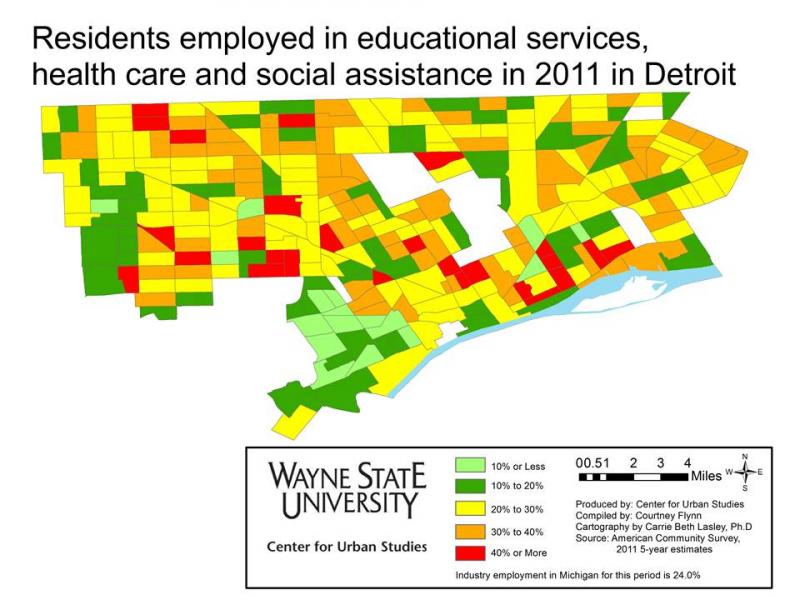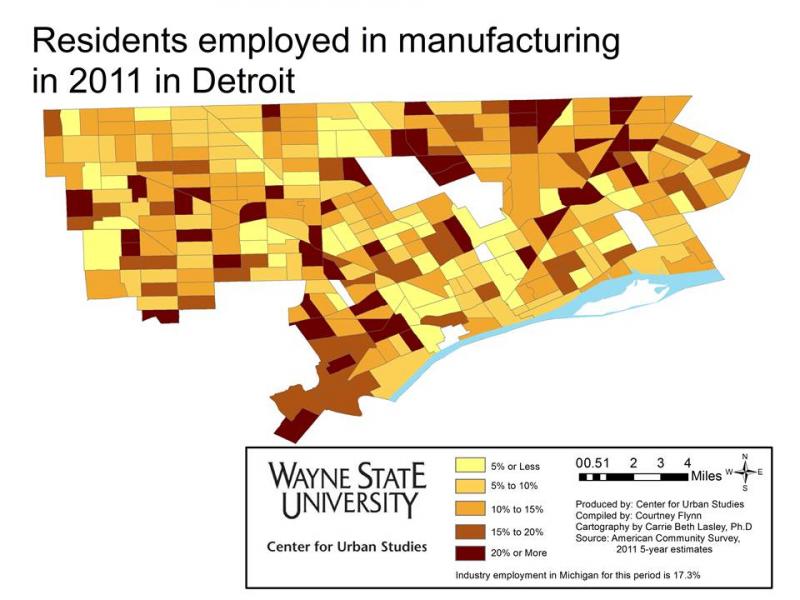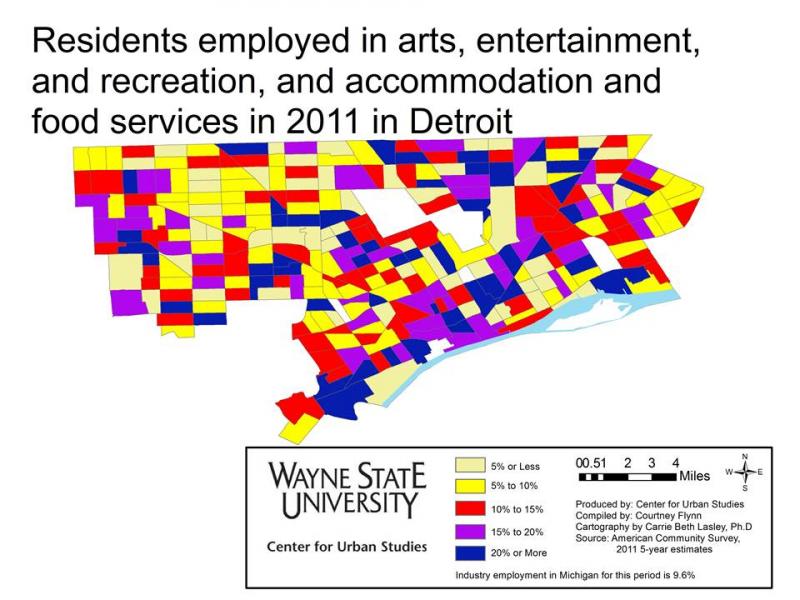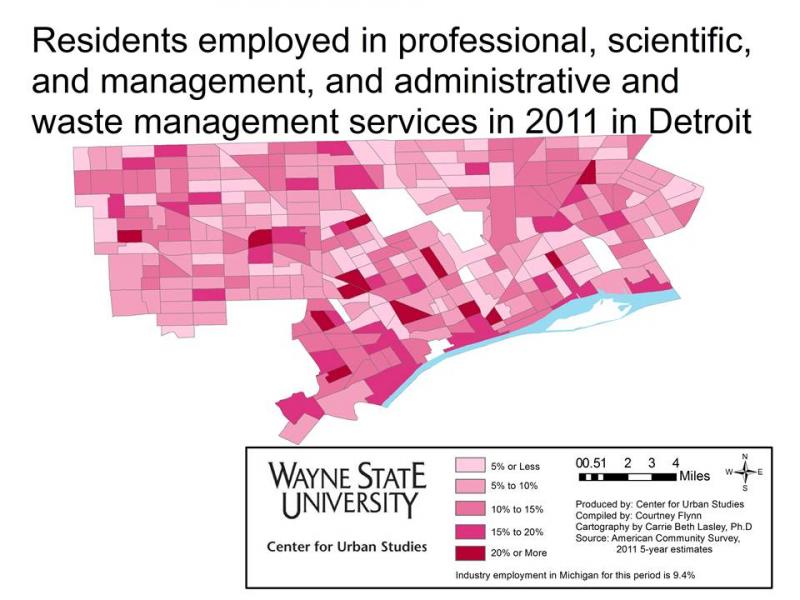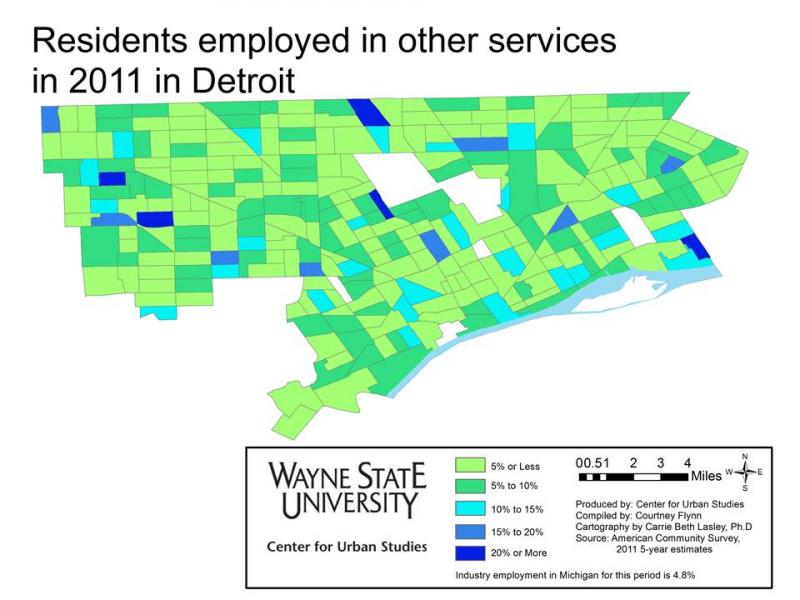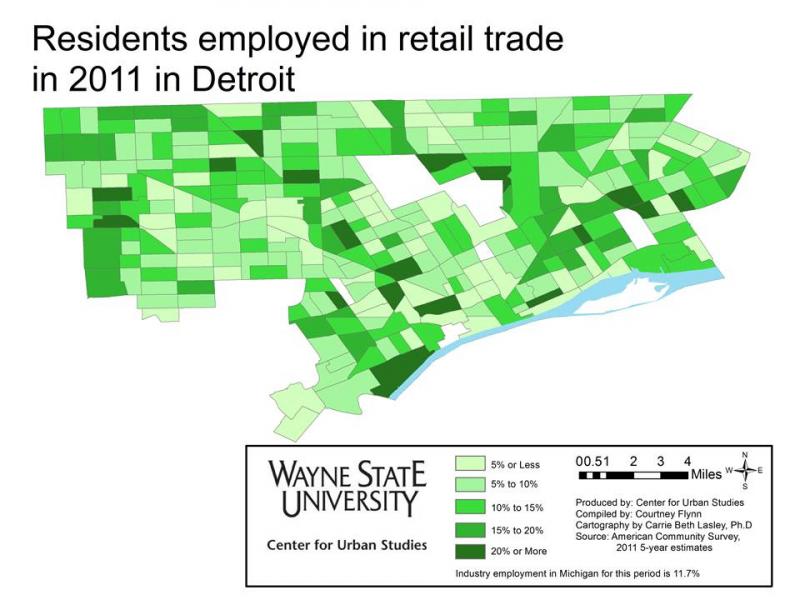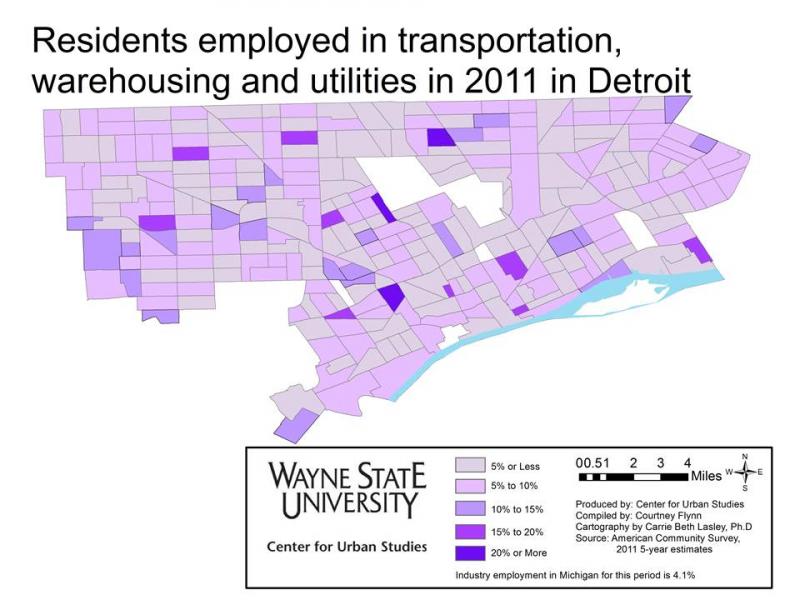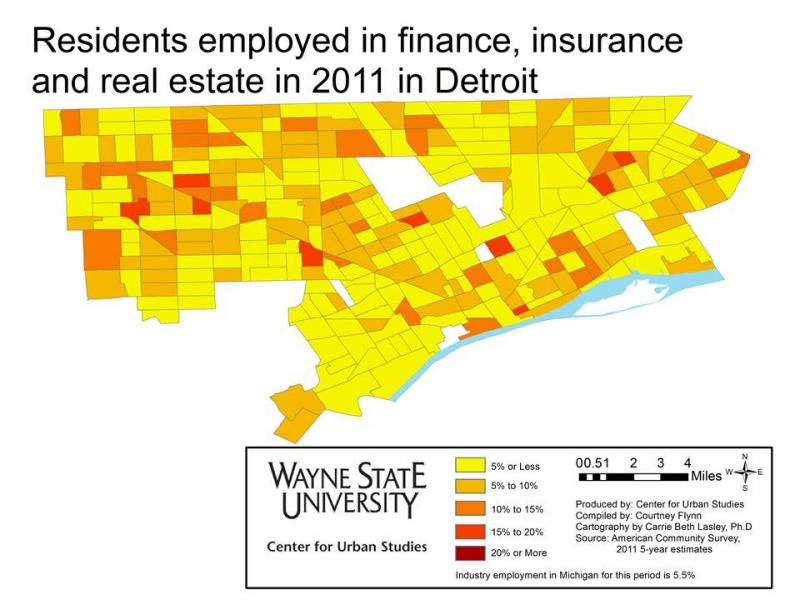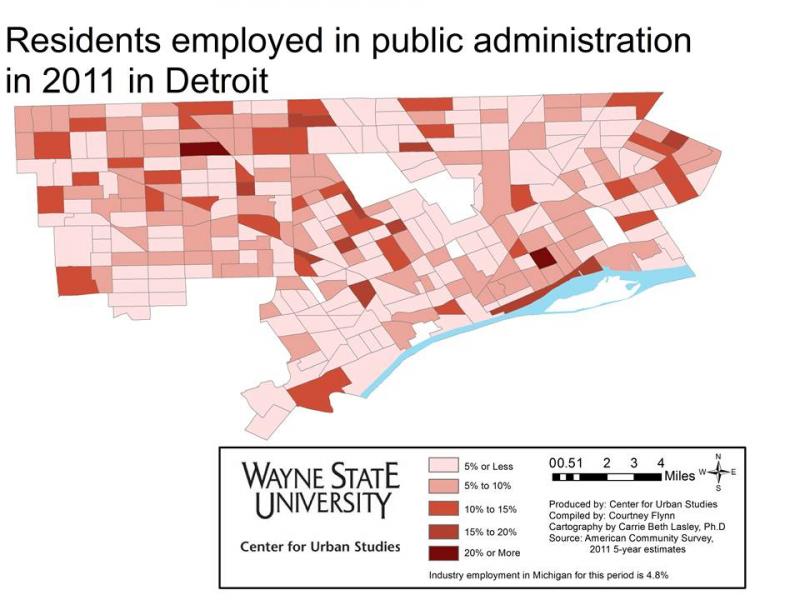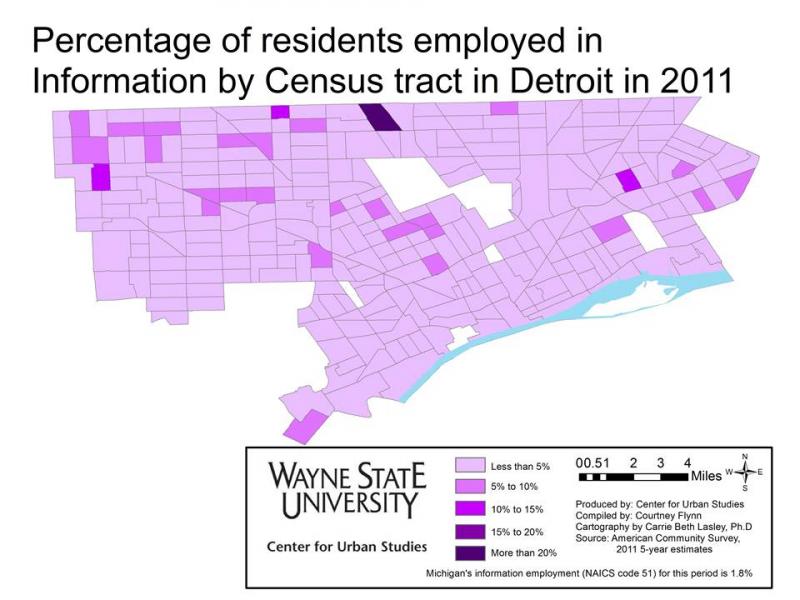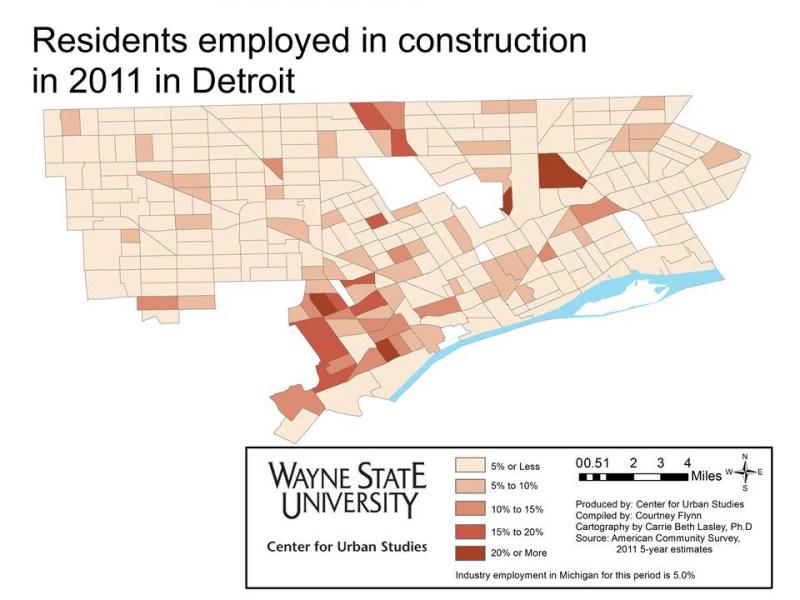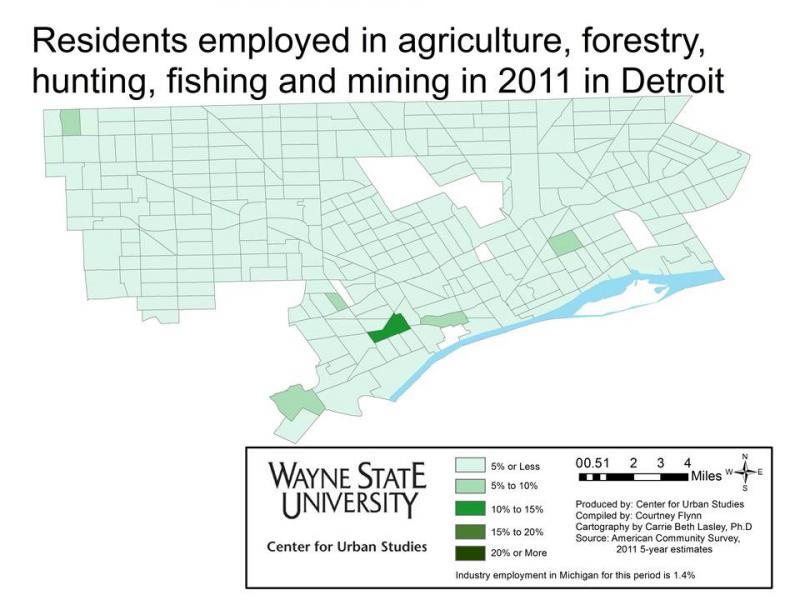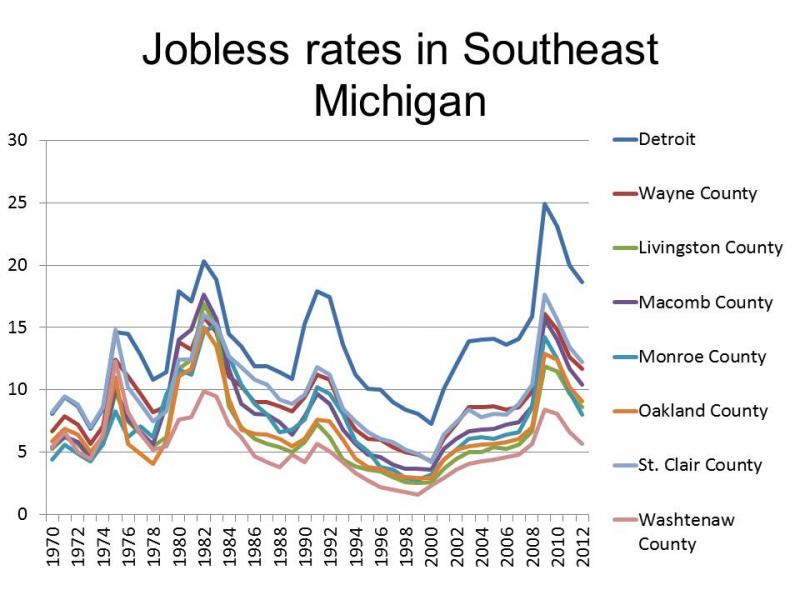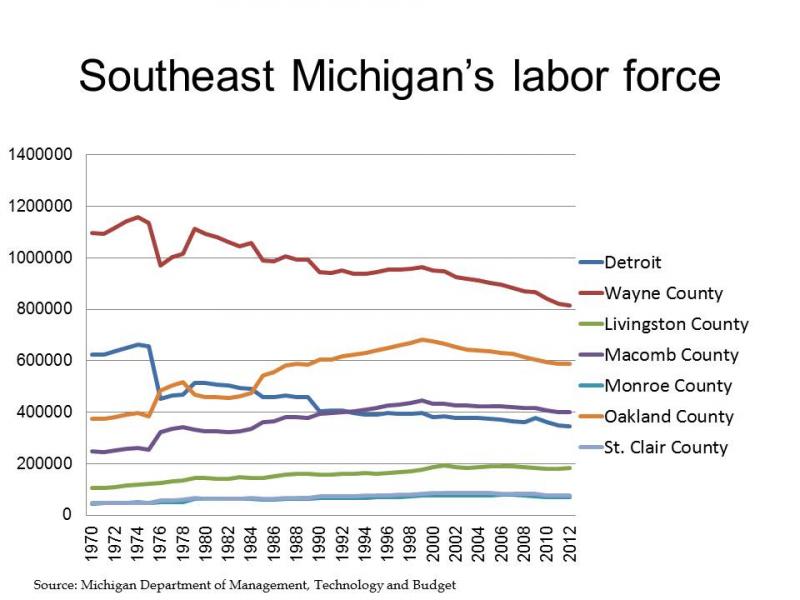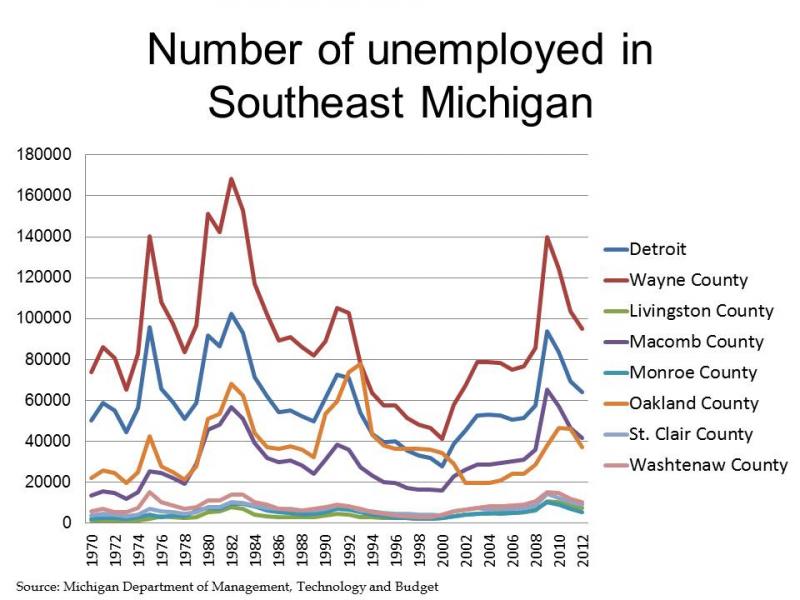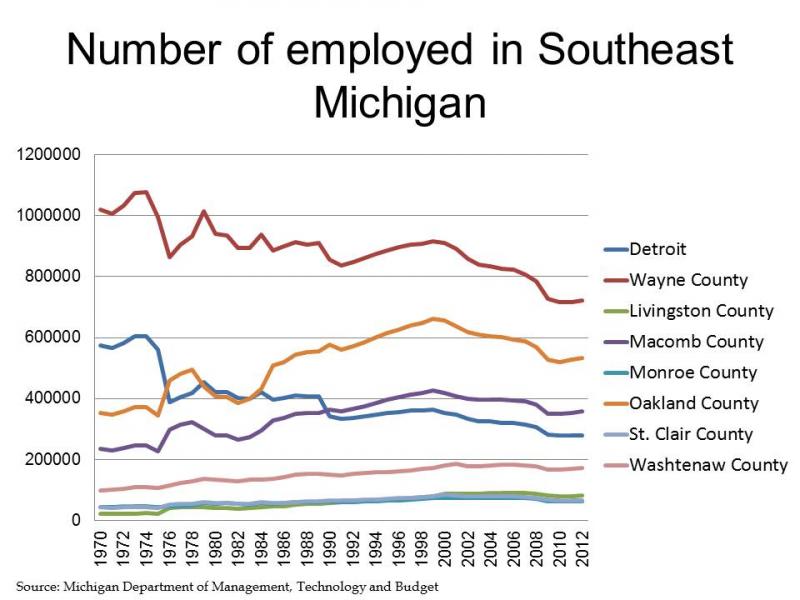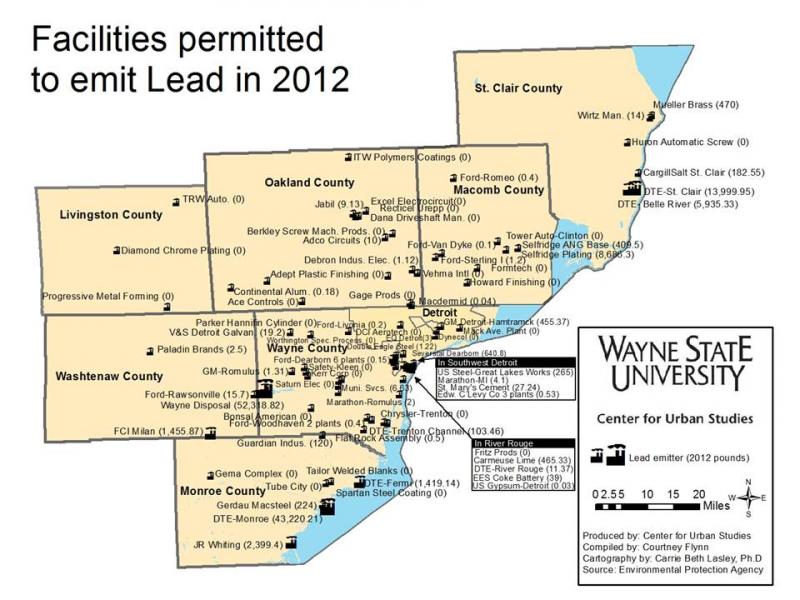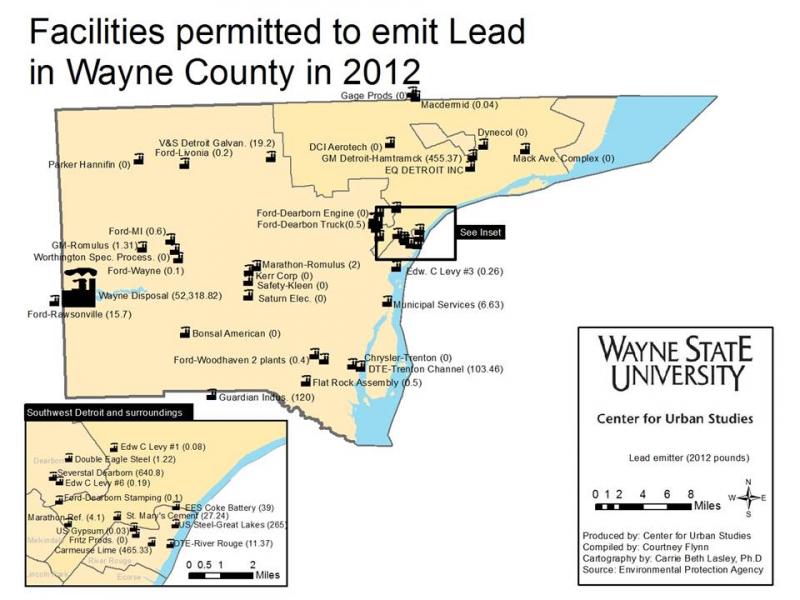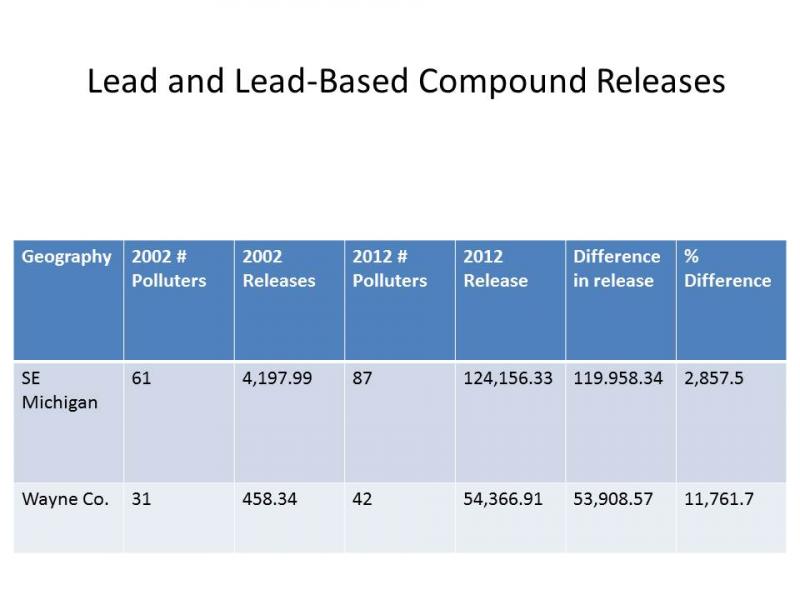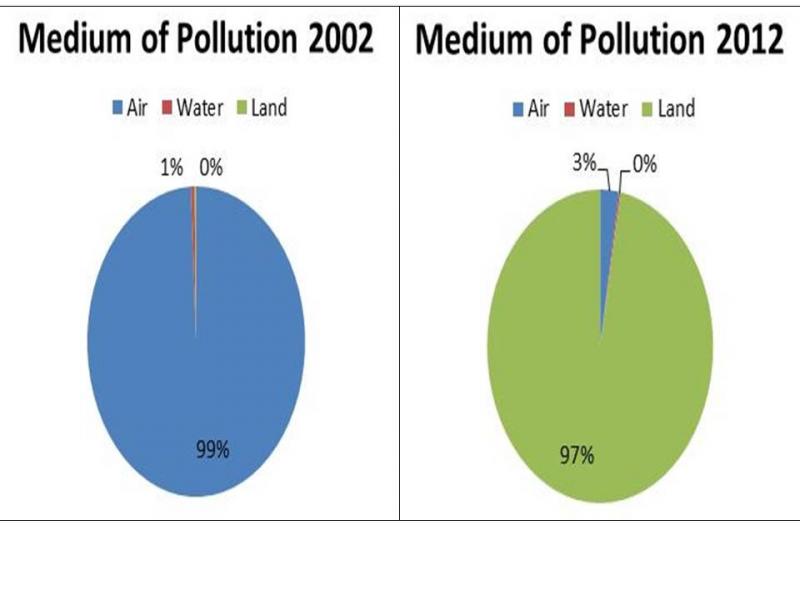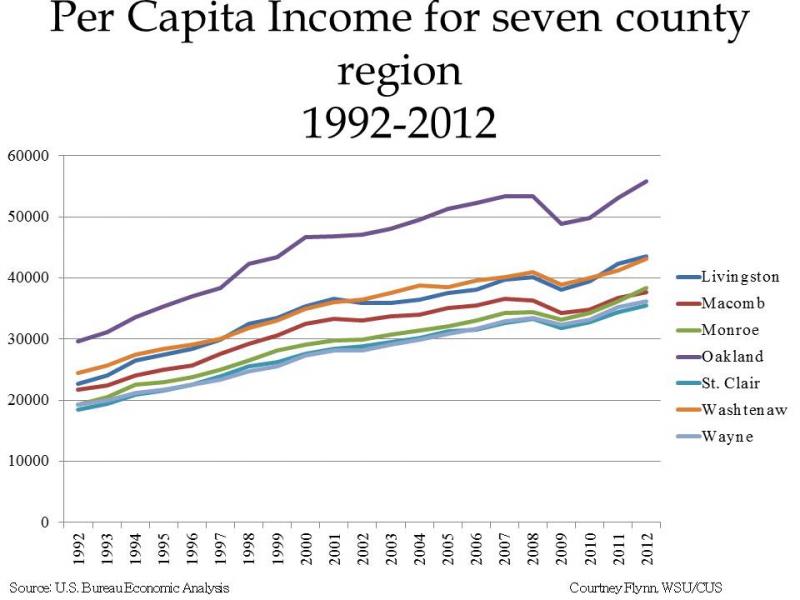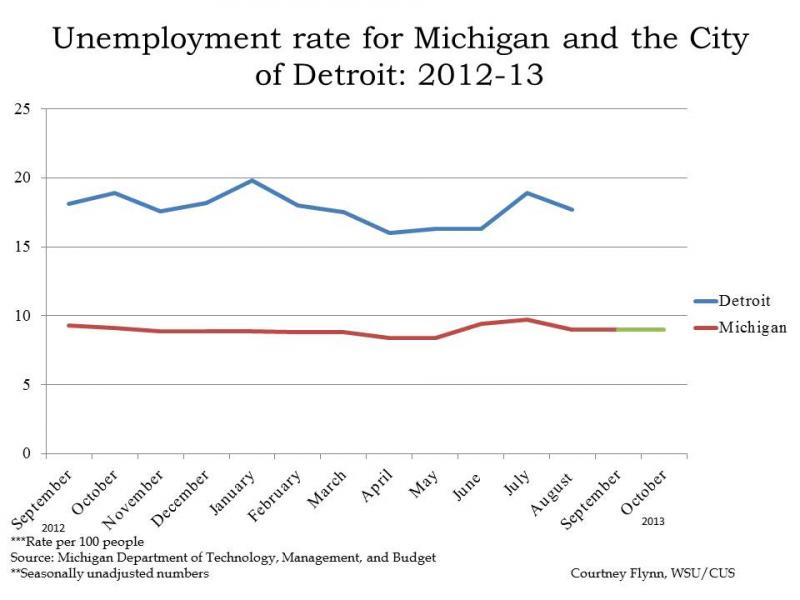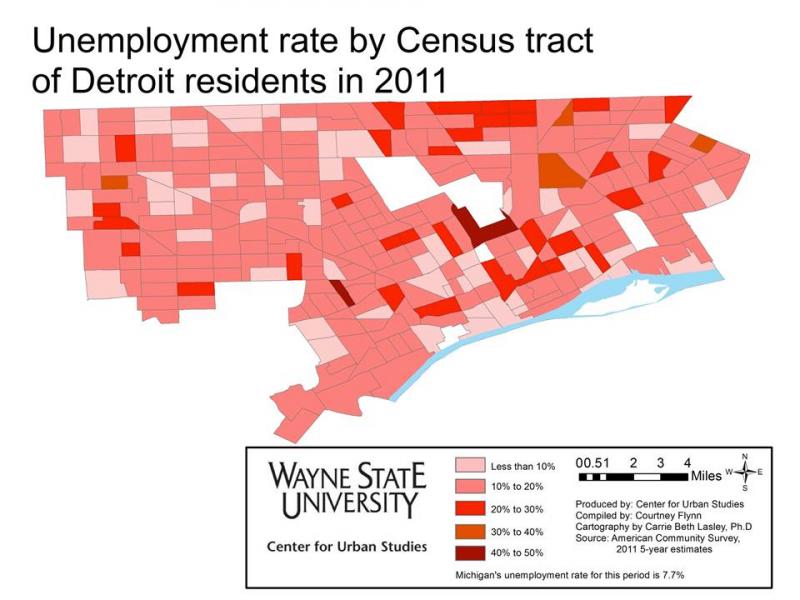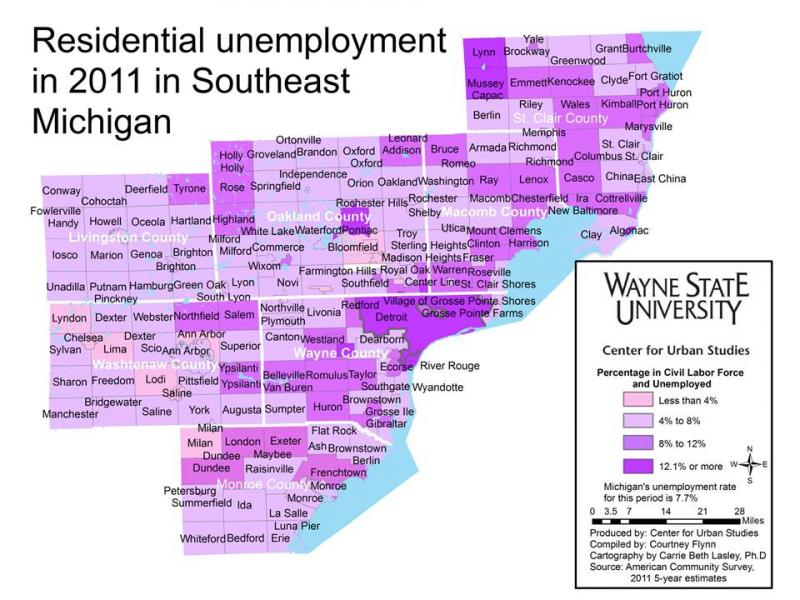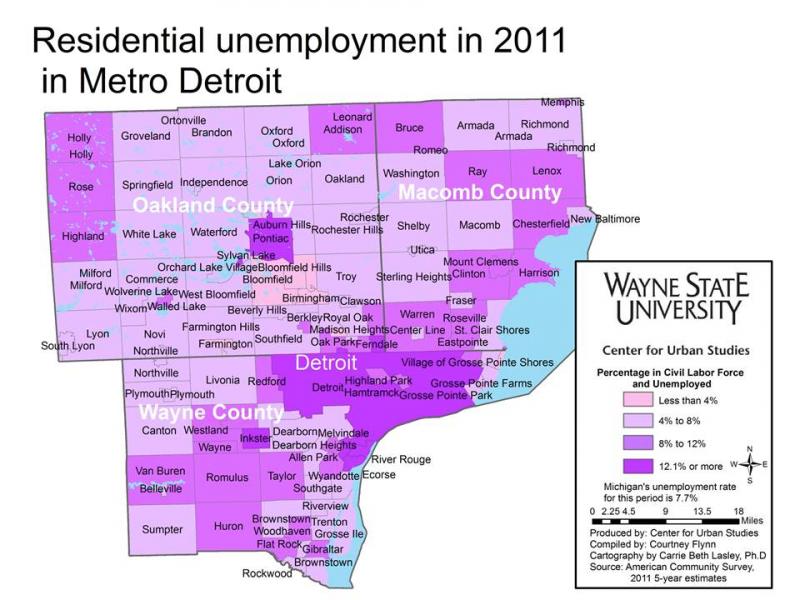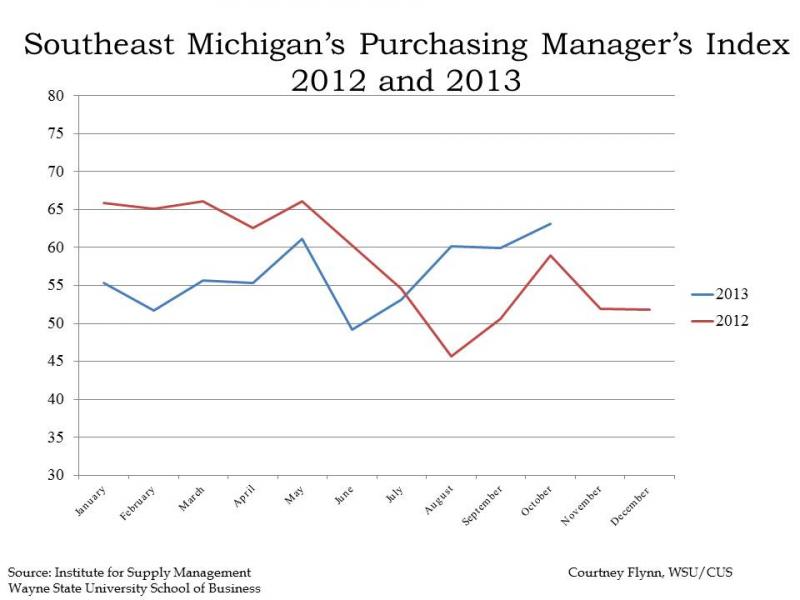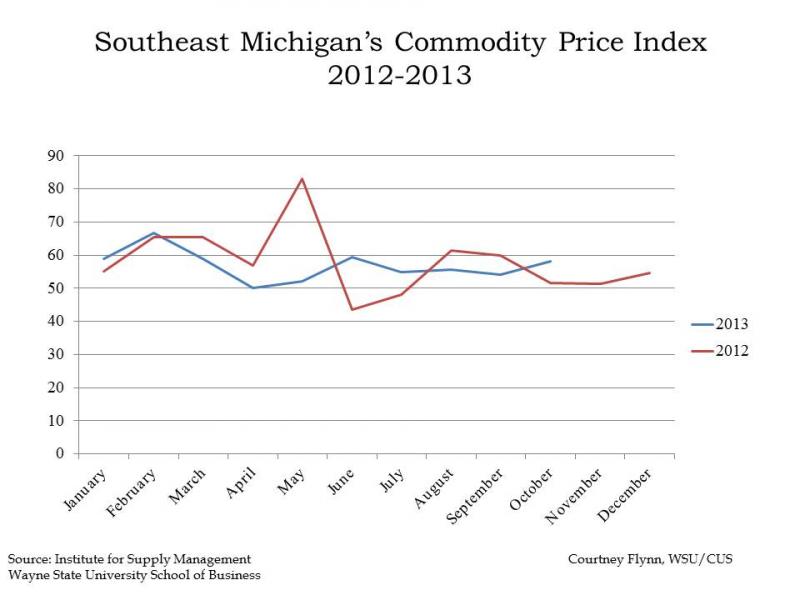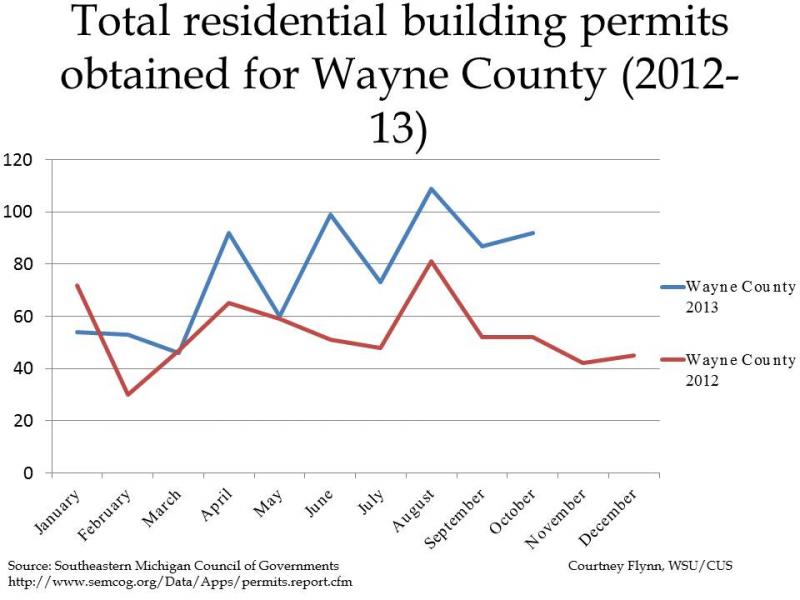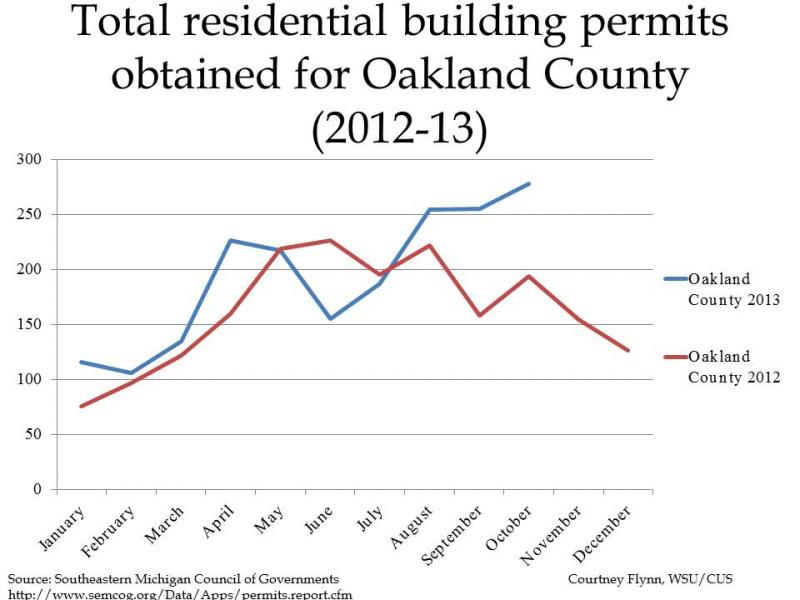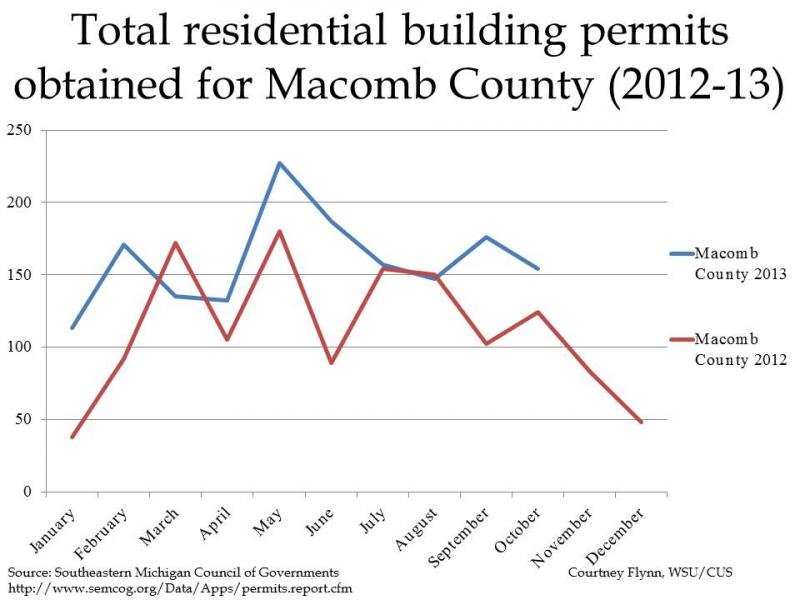Manufacturing, health, social services and education were the predominant industry occupations in Southeastern Michigan and the tri-county area in 2011, according to the five-year American Community Survey. The agriculture, forestry, hunting and fishing industries had the smallest proportion of people employed in the area for same time period.
In this post, we examine the types of jobs by percentage of the working population in Southeastern Michigan and the tri-county area and the City of Detroit as a whole. To learn more about the specific occupations included in the different industries described in this post please click here.
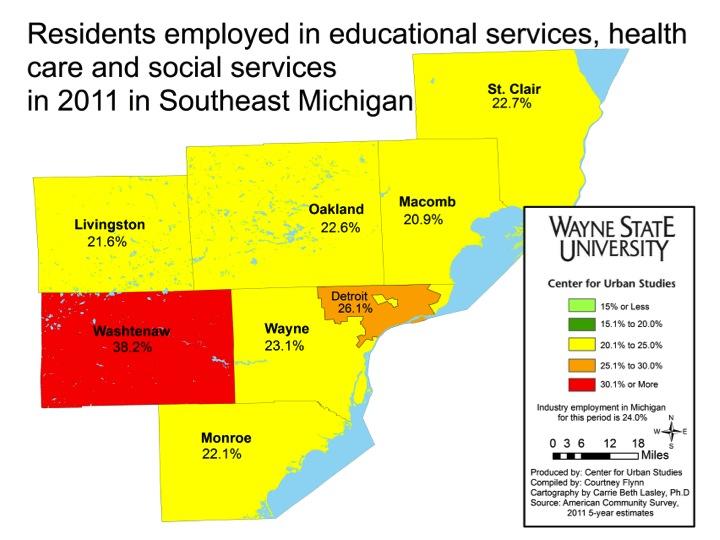
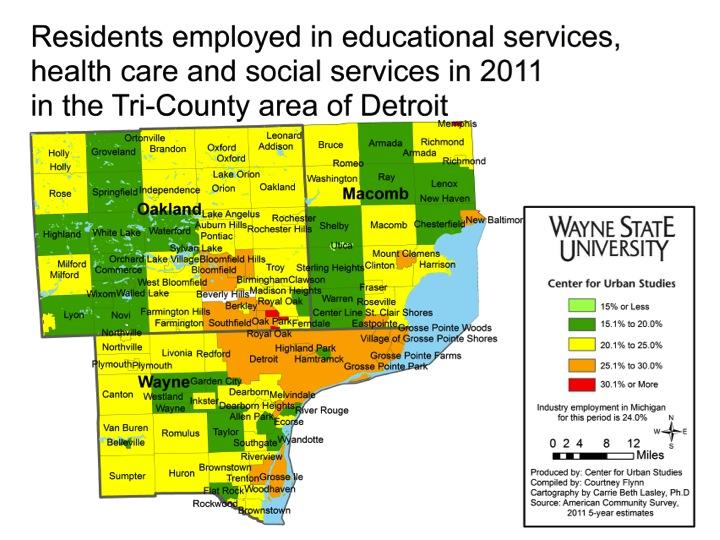
Washtenaw County had the largest percentage of residents employed in educational services, health care and/or social services. Of the employable population over the age 16, 38.2 percent were employed in such fields. This may be due to the fact that Ann Arbor, in Washtenaw County, is home to the University of Michigan and University of Michigan Hospital, St. Joseph Mercy Hospital and a VA Health Care Center. Detroit, which will be further explored in our next post, had 26.1 percent of its residents employed in these industries. Wayne State University is located in Detroit, as is the Detroit Medical Center, Henry Ford Hospital, and a VA Health Care Center.
Macomb County had the fewest number of residents employed in these industries, at 20.9 percent, however, the cities of New Baltimore, Eastpointe, and Mount Clemens had between 25.1 and 30 percent of its residents employed in these industries..
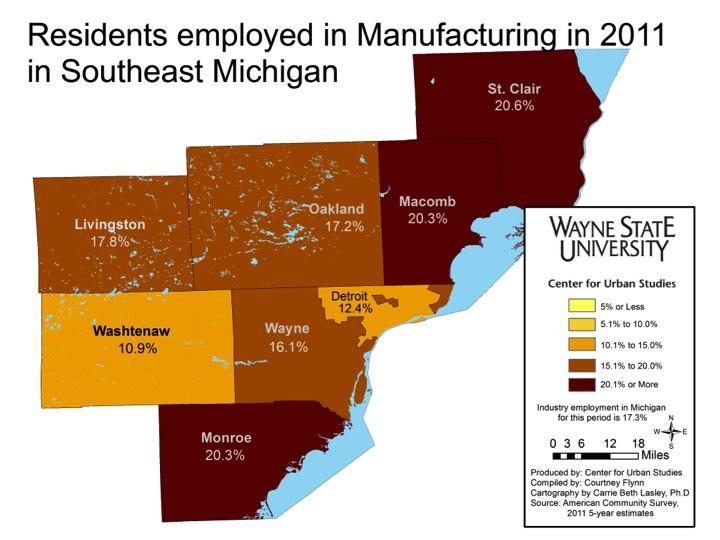
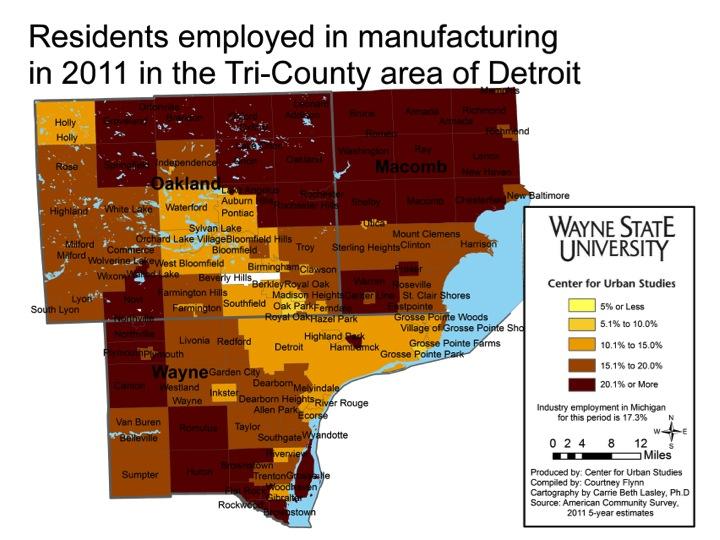
Of the seven counties in Southeastern Michigan, Wayne had the fewest percent of residents employed in the manufacturing industry, at 16.1 percent. St. Clair County had the most at 20.6 percent and Macomb and Monroe counties came in at a close second with 20.3 percent.
There was no municipality in the tri-county area where fewer than 5 percent of the residents were employed in manufacturing.
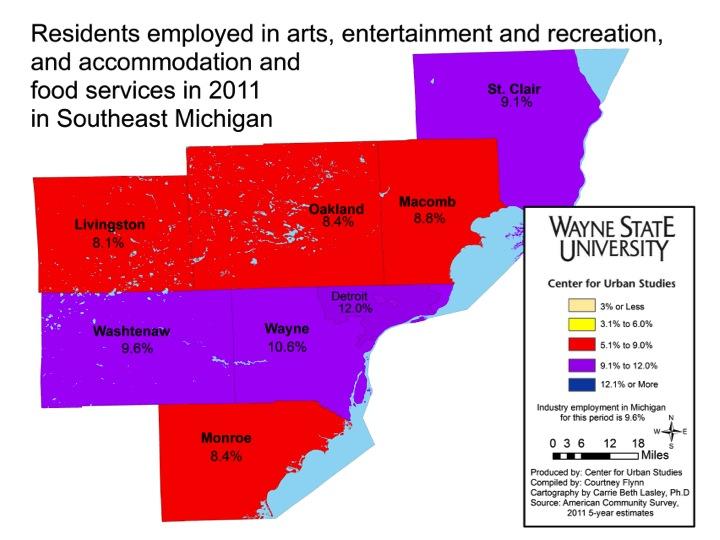
In the tri-county area, Oakland County, along with northwestern Wayne County, had several municipalities where more than 12 percent of the population was employed in professional, scientific, management, administration and waste services industries. Much of Macomb County had between 9.1 and 12 percent of the residents employed in one of those fields.
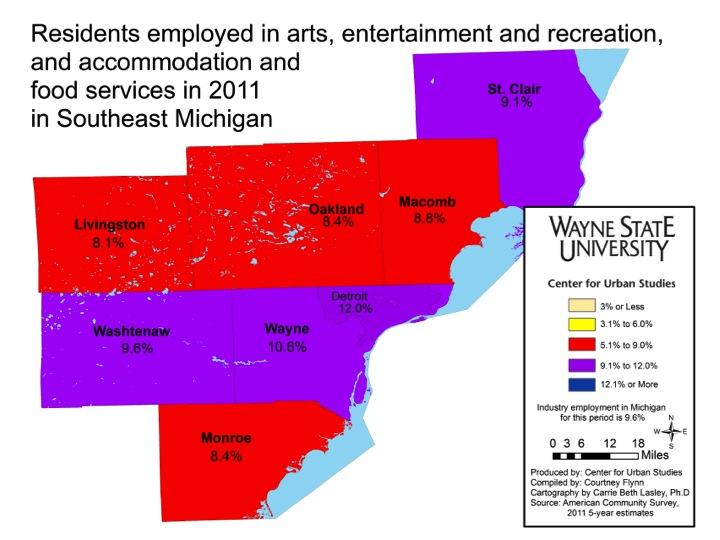
For the arts, entertainment and recreation, and accommodation and food services industries, the highest percent of the population employed across Southeastern Michigan is in the City of Detroit at 12 percent in 2011. Wayne County is the county in the region with the highest percent of its population employed in such occupations, and Livingston County has the fewest at 8.1 percent.
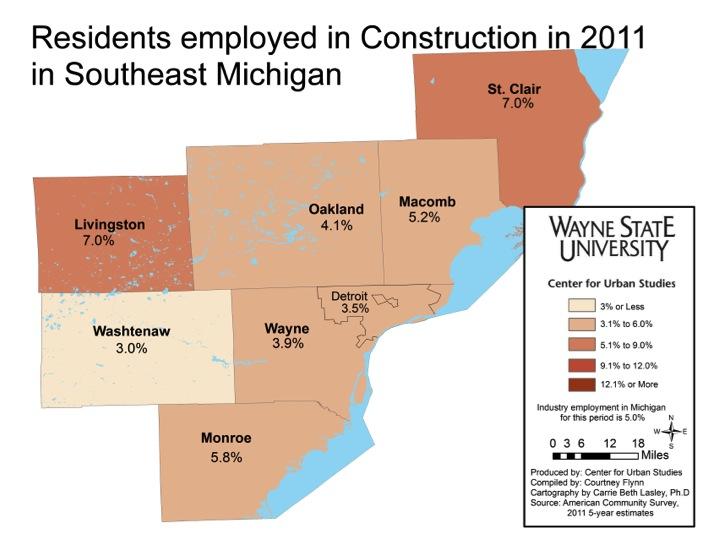
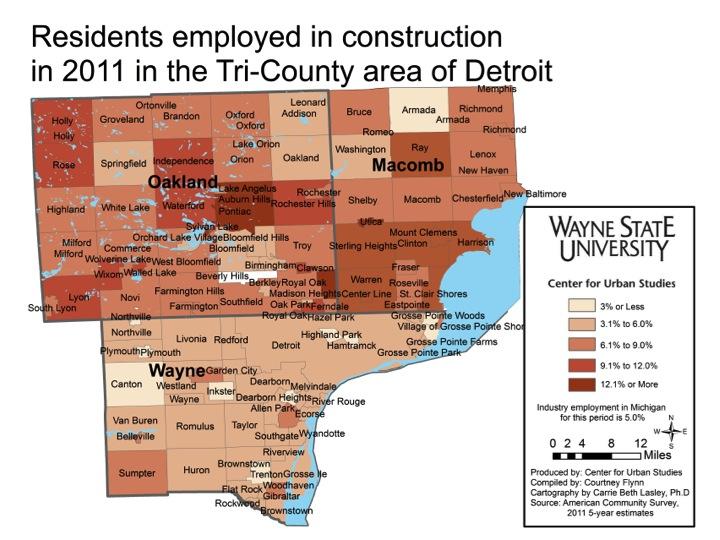
St. Clair and Livingston counties had the highest percentage of residents employed in construction in 2011, at 7.0 percent each. However, the cities of Auburn Hills and Pontiac in Oakland County had more than 12.1 percent of their population employed in the field.
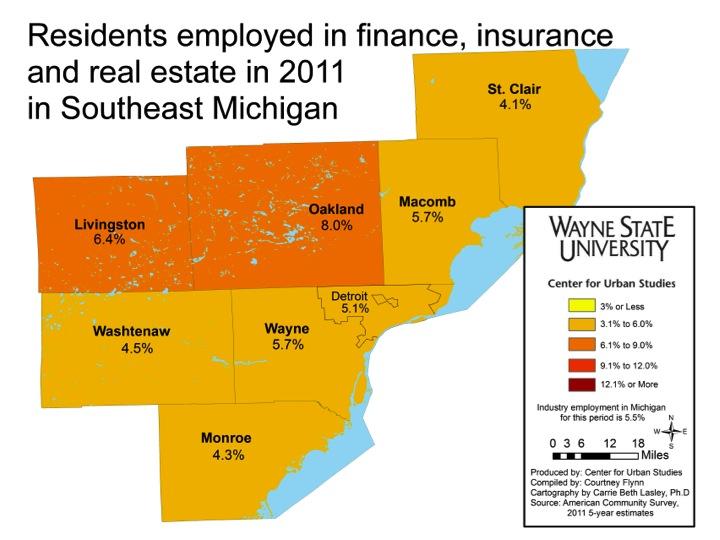
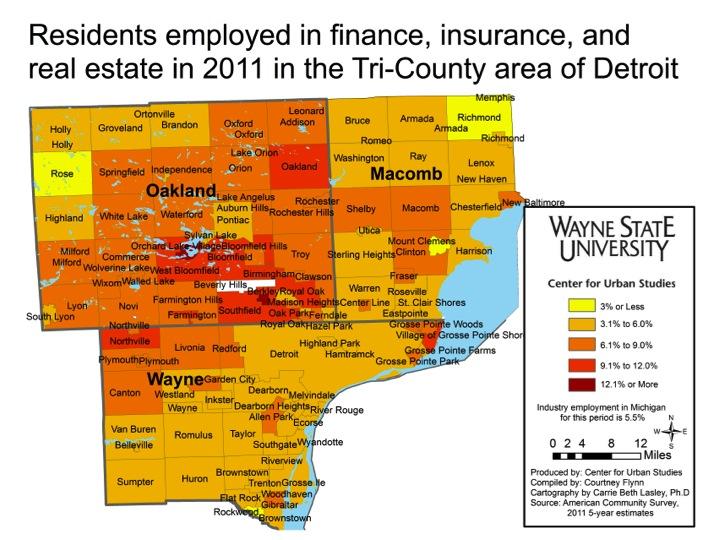
Finance, insurance, real estate, (FIRE) was a more common industry for residents from Oakland County at 8 percent; Livingston County came in second at 6.1 percent. There were two municipalities in Oakland County where 12.1 or more of the population was employed in one of those fields – Orchard Lake and Lathrup Village.
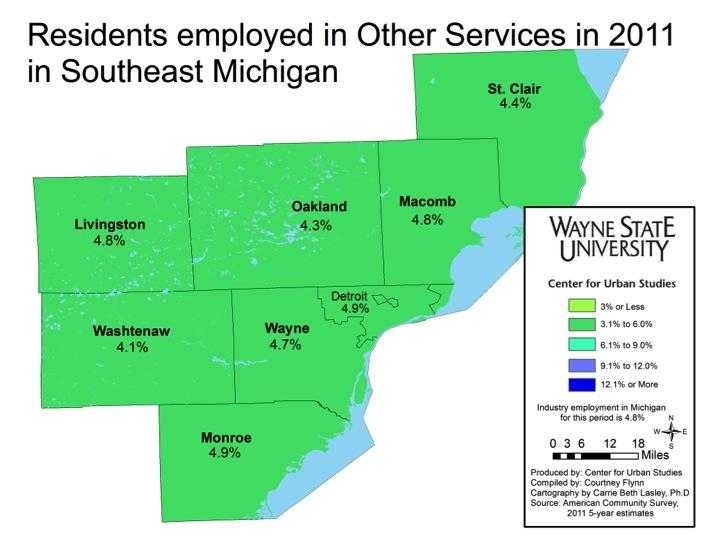
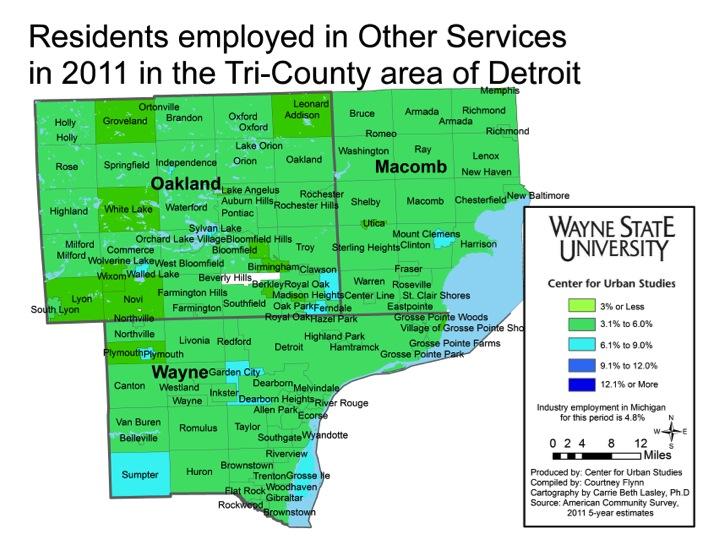
The percent of residents across the seven-county region employed in other services, which includes such jobs as mechanics, repairmen, launders and veterinary services fields, is distributed fairly evenly, ranging from 4.1 to 4.9 percent. Sumpter Township, Garden City, Grosse Ile, Dearborn Heights, Ferndale, Clawson, and Mount Clemens were all municipalities where between 6.1 and 9 percent of the populations were employed in the other services.
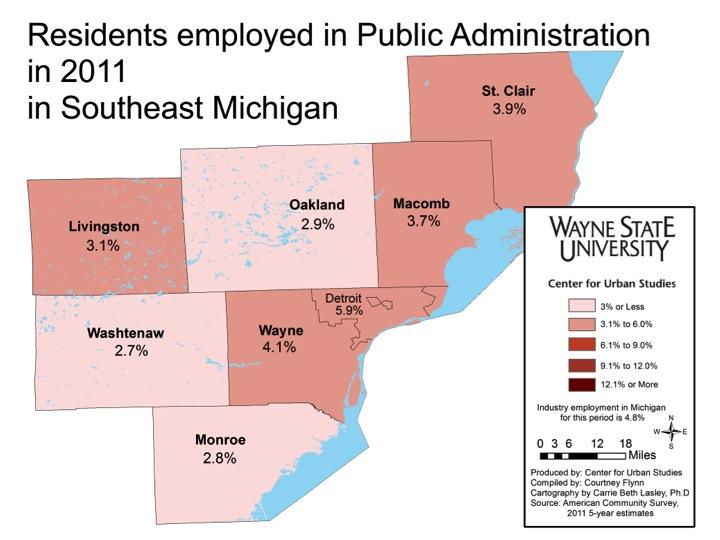
The City of Detroit had the highest population employed in Public Administration at 5.9 percent. Of all the counties in Southeastern Michigan, Wayne County had the highest number of employed at 4.1 percent.
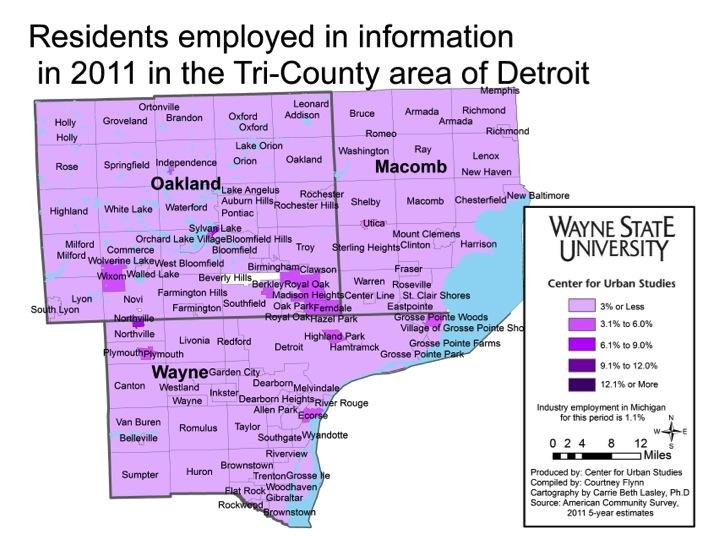
Although information services is described to be a growing field, less than 3 percent of the populations that makeup Macomb, Oakland, and Wayne counties are employed in this industry. The exceptions are residents in Royal Oak (3.1), Wixom (3.1),the cities of Highland Park (3.2), Hazel Park (3.2), Clarkston (3.3), Keego Harbor (3.5), Ferndale (3.7), Plymouth (3.8), Ecorse (4.0), Grosse Pointe Woods (4.3), Huntington Woods (4.3), Pleasant Ridge (4.6) Lathrup Village (5.7), Northville at (6.4) percent and Sylvan Lake at (6.9) that are employed in the field.
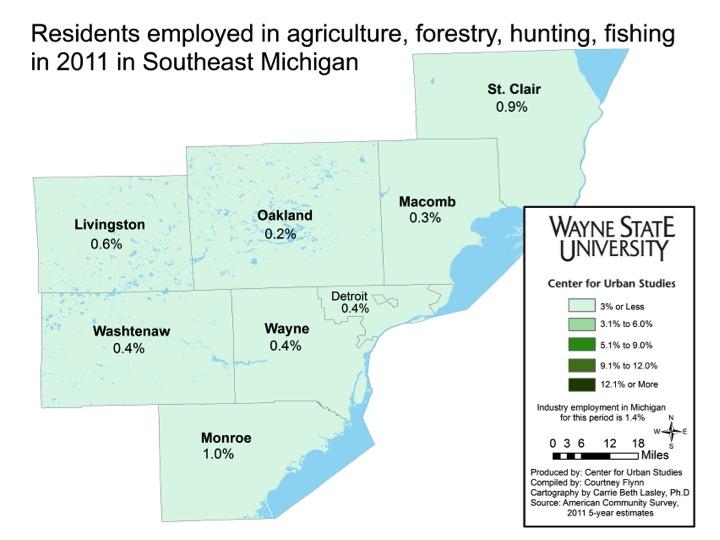
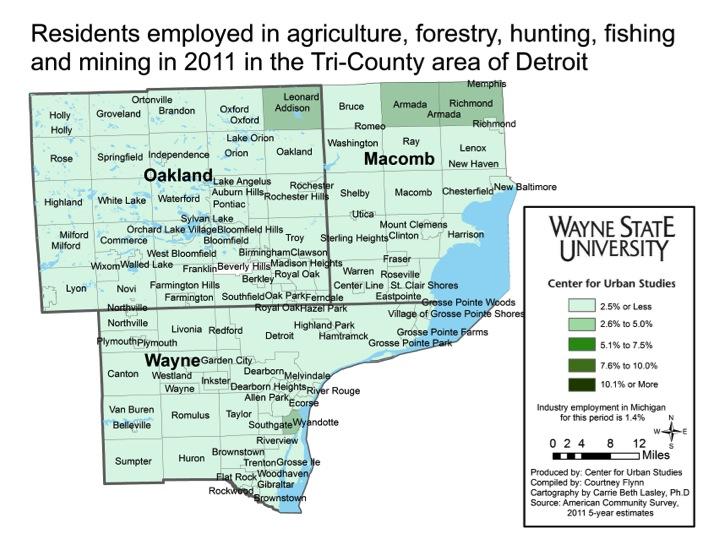
None of the seven counties in the region boast a population in which more than 1 percent is employed in the agriculture, hunting, fishing, or forestry fields. Monroe County has the highest population at 1 percent. The cities of Leonard and Addison in Oakland County; Armada, Richmond, and Memphis in Macomb County; and Wyandotte in Wayne County had between 2.6 and 5 percent of its population employed in one of the above-mentioned fields.
